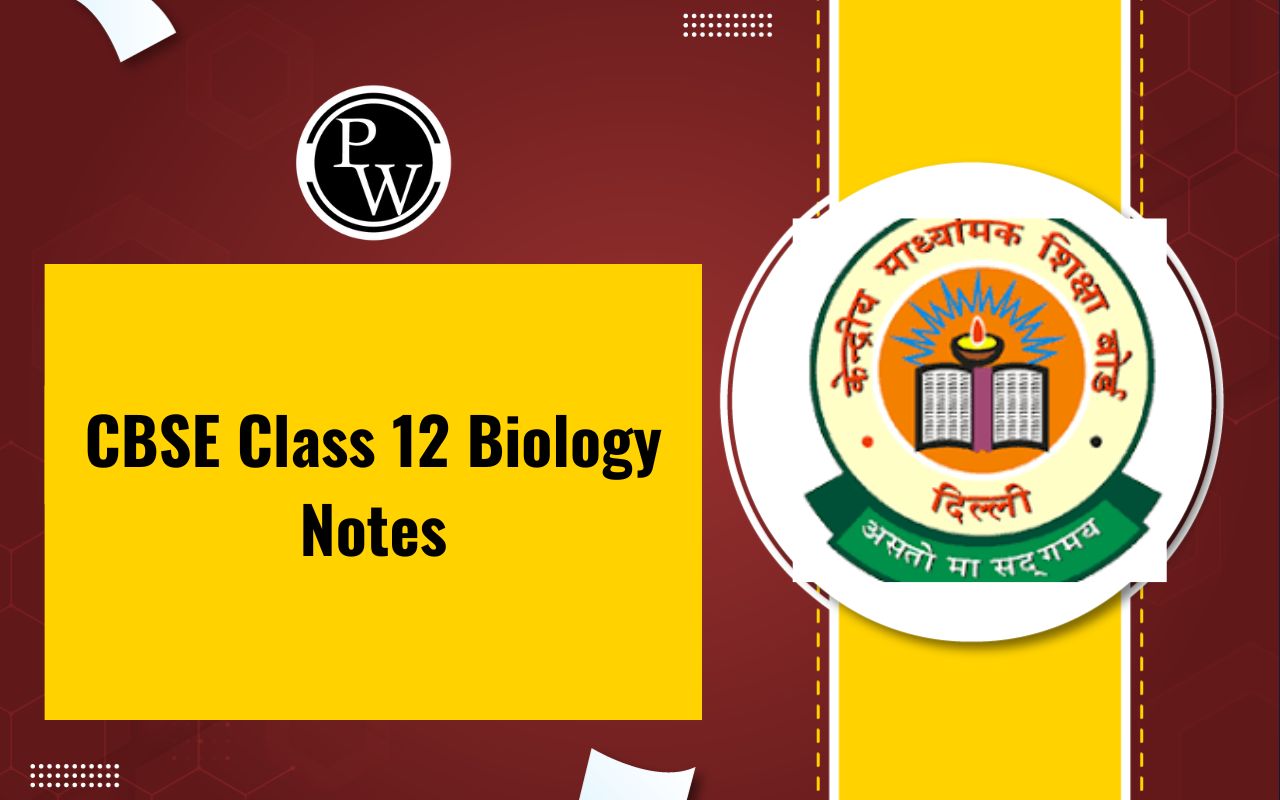
CBSE Class 12 Biology Notes Chapter 6: These notes are important for students preparing for their CBSE Class 12 Biology board exams particularly for Chapter 6 Molecular Basis of Inheritance . This chapter talks about the fundamental processes that govern genetic inheritance, such as DNA replication, transcription and translation. The notes break down complex topics like the structure of DNA, the role of RNA, and the regulation of gene expression into simpler concepts, making them easier to understand.
By studying these notes, students can gain a detailed understanding of molecular genetics, build a solid foundation for future studies in biology and contribute to advancements in fields like medicine and biotechnology.CBSE Class 12 Biology Notes Chapter 6 Molecular Basis of Inheritance Overview
These notes for CBSE Class 12 Biology Chapter 6 Molecular Basis of Inheritance have been prepared by subject experts of Physics Wallah. By using these notes students can improve their understanding of molecular genetics and prepare well for their board exams.CBSE Class 12 Biology Notes Chapter 6 Molecular Basis of Inheritance PDF
The PDF link for the CBSE Class 12 Biology Notes on Chapter 6, Molecular Basis of Inheritance, is available below. These notes are written in simple language, making it easier for students to grasp complex ideas. Download the PDF to enhance your preparation and strengthen your understanding of molecular genetics for the board exams.CBSE Class 12 Biology Notes Chapter 6 Molecular Basis of Inheritance PDF
CBSE Class 12 Biology Notes Chapter 6 Molecular Basis of Inheritance
Here we have provided CBSE Class 12 Biology Notes Chapter 6 Molecular Basis of Inheritance-What is DNA?
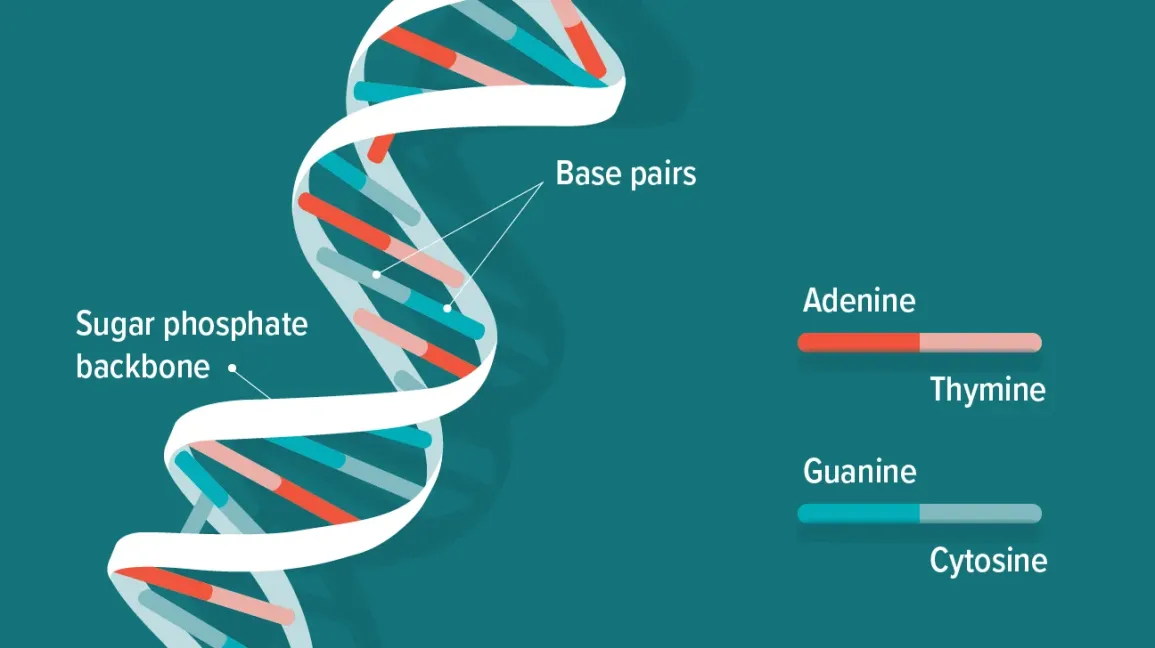 DNA, or Deoxyribonucleic Acid, is the molecule responsible for carrying genetic information in all living organisms. It is a long chain made up of deoxyribonucleotides, and its length is determined by the number of nucleotide base pairs.
DNA, or Deoxyribonucleic Acid, is the molecule responsible for carrying genetic information in all living organisms. It is a long chain made up of deoxyribonucleotides, and its length is determined by the number of nucleotide base pairs.
DNA Structure
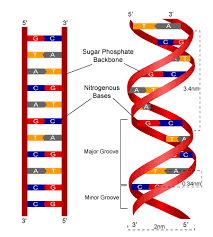 Watson and Crick were the first scientists to propose the double-helix model of DNA, using X-ray crystallography. Each strand of DNA is a polymer of nucleotides. Each nucleotide consists of three components: a deoxyribose sugar, a nitrogenous base, and a phosphate group. DNA follows the central dogma of molecular biology, where genetic information flows from DNA to RNA, and then to protein.
The structure of DNA resembles a twisted ladder. The two strands are held together by weak hydrogen bonds between paired nitrogenous bases. In this pairing, a purine base (adenine or guanine) always pairs with a pyrimidine base (thymine or cytosine). Specifically, adenine (A) pairs with thymine (T), and guanine (G) pairs with cytosine (C).
Watson and Crick were the first scientists to propose the double-helix model of DNA, using X-ray crystallography. Each strand of DNA is a polymer of nucleotides. Each nucleotide consists of three components: a deoxyribose sugar, a nitrogenous base, and a phosphate group. DNA follows the central dogma of molecular biology, where genetic information flows from DNA to RNA, and then to protein.
The structure of DNA resembles a twisted ladder. The two strands are held together by weak hydrogen bonds between paired nitrogenous bases. In this pairing, a purine base (adenine or guanine) always pairs with a pyrimidine base (thymine or cytosine). Specifically, adenine (A) pairs with thymine (T), and guanine (G) pairs with cytosine (C).
Structure of Polynucleotide
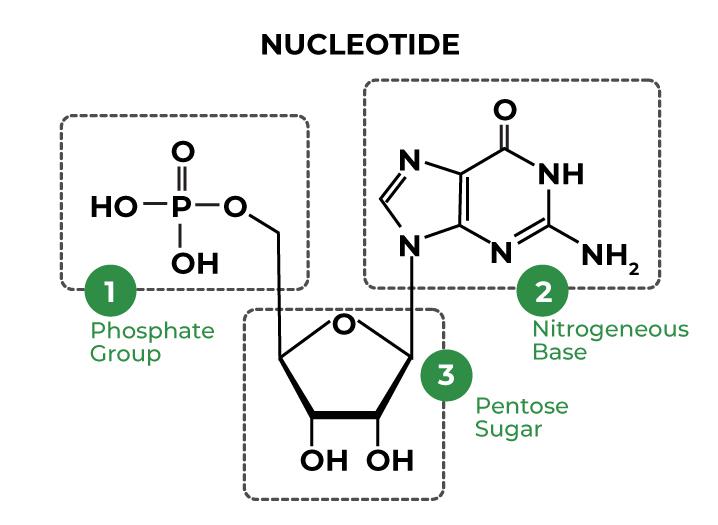 A polynucleotide is a long chain made up of repeating units called nucleotides, which are the building blocks of DNA and RNA.
A polynucleotide is a long chain made up of repeating units called nucleotides, which are the building blocks of DNA and RNA.
Nucleotide Structure
Each nucleotide consists of three components:Nitrogenous Base : These are classified into two types:
- Purines : Adenine (A) and Guanine (G)
- Pyrimidines : Cytosine (C) and Thymine (T) in DNA (or Uracil (U) in RNA)
Sugar : The sugar is a pentose, which differs between DNA and RNA:
- Deoxyribose in DNA
- Ribose in RNA
Phosphate Group : The phosphate group connects the nucleotides together by linking the sugar of one nucleotide to the phosphate of the next, forming the sugar-phosphate backbone of the polynucleotide chain.
The combination of a sugar and a nitrogenous base forms a nucleoside , while a nucleoside with an added phosphate group becomes a nucleotide . These nucleotides link together to form the polynucleotide chain that makes up DNA or RNA.Packaging DNA Helix
In prokaryotes , DNA is organized as a large loop in the nucleoid region. Here, the negatively charged DNA is tightly held by positively charged proteins. In contrast, eukaryotic DNA is arranged in a more complex structure within chromosomes. In eukaryotes, DNA is wrapped around a core of histone proteins to form structures called nucleosomes . A nucleosome consists of DNA wound around a histone octamer, which is made up of 8 histone proteins. These histones are rich in basic amino acids like lysine and arginine, which give them a positive charge. There are five types of histone proteins: H1, H2A, H2B, H3, and H4 , with the histone octamer containing two molecules each of H2A, H2B, H3, and H4. This packaging helps regulate gene expression. A nucleosome prevents DNA from becoming tangled and contains about 200 base pairs (bp) of DNA. The further organization of chromatin (DNA and protein complex) is aided by Non-histone chromosomal (NHC) proteins .- Euchromatin : These are transcriptionally active regions of DNA where chromatin is loosely packed and appear lightly stained.
- Heterochromatin : These are transcriptionally inactive regions where chromatin is densely packed, taking up a darker stain.
RNA World
RNA is believed to have been the first genetic material, with substantial evidence suggesting that essential life processes evolved around RNA. It serves dual roles, acting both as genetic material and as a catalyst. However, RNA's highly reactive nature made it unstable as a catalyst. This instability led to the evolution of DNA from RNA, with chemical modifications that enhanced its stability.Replication
Watson and Crick proposed that DNA replication is semiconservative , meaning that each new DNA molecule consists of one original strand and one newly synthesized strand. This was experimentally confirmed by Meselson and Stahl in 1958. Taylor et al. conducted experiments using radioactive thymidine in faba beans (Vicia faba) to further demonstrate that DNA replication is indeed semiconservative. The enzyme DNA polymerase plays a crucial role in DNA replication, catalyzing the process. It can only add nucleotides in the 5’ to 3’ direction. This results in two different replication processes:- Leading Strand : Replication is continuous along this strand, where the template strand runs in the 3’ to 5’ direction.
- Lagging Strand : Replication is discontinuous here because the template strand runs in the 5’ to 3’ direction. This strand is synthesized in short segments known as Okazaki fragments that are later joined together.
Genetic Code
The genetic code refers to the sequences of bases in messenger RNA (mRNA) that specify the order of amino acids in protein synthesis. Each code consists of three nucleotides, forming what are known as codons or triplets . There are a total of 64 possible codons; 61 of these codons correspond to specific amino acids, while the remaining three are known as stop codons because they do not code for any amino acid. The codon AUG serves as both the start codon and codes for the amino acid methionine , marking the beginning of protein synthesis. This code is essential for translating the genetic information from mRNA into functional proteins, which are vital for the structure and function of cells.CBSE Class 12 Biology Notes Chapter 6 FAQs
What is DNA, and why is it important?
What is the structure of DNA?
What is a gene?
What is the central dogma of molecular biology?
How does DNA replication occur?

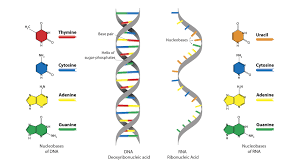 RNA is a single-stranded nucleic acid found in all living cells. It acts as a messenger, carrying instructions from DNA to help control the process of protein synthesis. There are three main types of RNA:
RNA is a single-stranded nucleic acid found in all living cells. It acts as a messenger, carrying instructions from DNA to help control the process of protein synthesis. There are three main types of RNA:



